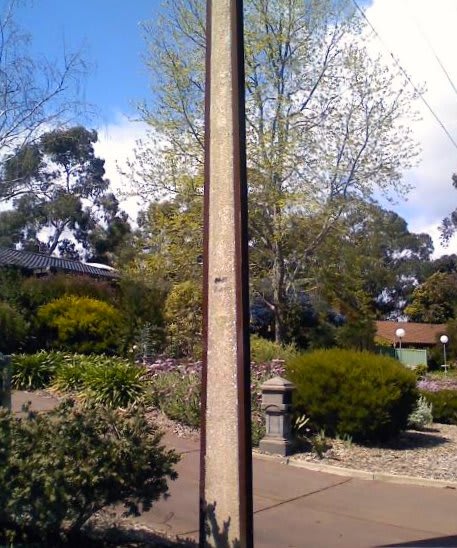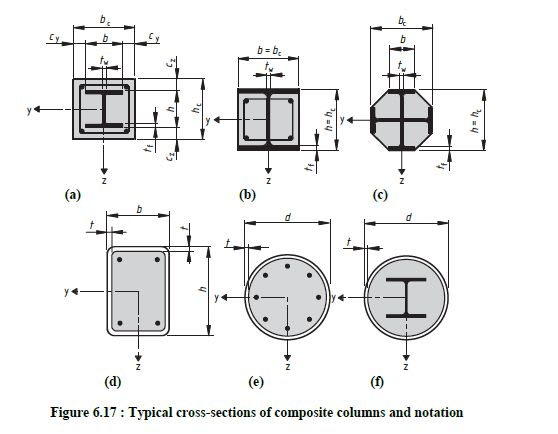Navigation
Install the app
How to install the app on iOS
Follow along with the video below to see how to install our site as a web app on your home screen.
Note: This feature may not be available in some browsers.
More options
Style variation
-
Congratulations cowski on being selected by the Eng-Tips community for having the most helpful posts in the forums last week. Way to Go!
You are using an out of date browser. It may not display this or other websites correctly.
You should upgrade or use an alternative browser.
You should upgrade or use an alternative browser.
Steel and concrete benefits 1
- Thread starter Fynch
- Start date
- Status
- Not open for further replies.
Filling with concrete can increase the axial compression capacity of hollow sections (1.5-2.5 times the axial capacity can be achieved quite easily depending on size). This is the main reason designers elect to fill columns, in addition to the possible increases in fire resistance as BARetired noted.
Filling with concrete can result in a very minor increase to bending capacity (<=5% of that order). Virtually no benefit if you're after additional bending capacity.
Filling with concrete doesn't really impact on section shear capacity, it's generally accepted that you design for shear based on the bare steel section.
Filling with concrete offers the ability to enhance compression and bending strengths further by the addition of a longitudinal reinforcement cage within the concrete.
While filling with concrete can achieve further fire resistance, you still need to consider how to get the loads into the core of the concrete for the fire case. In most practical uses of concrete filled hollow sections I've been involved in, designers have just ended up having to use intumescent paint to achieve the load transfer when dealing with larger loads. So the fire protection benefits always end up being a moot point.
Filling with concrete can result in a very minor increase to bending capacity (<=5% of that order). Virtually no benefit if you're after additional bending capacity.
Filling with concrete doesn't really impact on section shear capacity, it's generally accepted that you design for shear based on the bare steel section.
Filling with concrete offers the ability to enhance compression and bending strengths further by the addition of a longitudinal reinforcement cage within the concrete.
While filling with concrete can achieve further fire resistance, you still need to consider how to get the loads into the core of the concrete for the fire case. In most practical uses of concrete filled hollow sections I've been involved in, designers have just ended up having to use intumescent paint to achieve the load transfer when dealing with larger loads. So the fire protection benefits always end up being a moot point.
ClearCalcs
Structural
You’ll see it a lot in bollards too where a steel tube is filled with concrete to keep it from denting when someone inevitably crashes into it.
Tell that to Mr Stobie! You are mostly right but I can't help but post a contrary indicator. (Though I think they mostly use small-I beams rather than channels.)BAretired said:Pipe or hollow steel columns may benefit by filling with concrete, both in strength and fire resistance, but I can't think of a reason to fill a channel section with concrete.

James Cyril Stobie (1895–1953)
It worked well 100 years ago and apparently is sufficiently suitable to not introduce an alternative design.
Back on topic. There is plenty of research available online about the concrete filled steel hollow section. However it my experience they are a pretty niche item that works better in an academic paper than the real world. If fire is a concern then the connections are generally still exposed and need addressing. If it isn't a concern then it is likely easier just to use just steel, beats having to get two different contractors and coordinate it all. For lots of things the economy just isn't there.
HTURKAK
Structural
- Jul 22, 2017
- 3,358
I think this is a country practice.. There is a code (Eurocode 4: Design of composite steel and concrete structures ).and the common composite sections shown below ; ( snap from the same code );

( But when or why would you choose to use a box or c shape steel section and fill it with concrete?) this statement implies you have witnessed the use of box section composed of C shapes and filled with concrete..Sometimes you can see concrete filled bollards ..( steel pipe filled with concrete )..etc.
Yes.. this is a seldom precast practice in some eastern countries. Morecver, the columns and beams sometimes having variable depth. The rectangular or square section composed of C sections and filled with pressurized concrete at precast plant. The advantages of this type of precast composite columns, enhanced fire resistance, cheaper than steel frame ....etc...
- Thread starter
- #7
I believe I should have explained where I saw this design. It's a flood defence structure whereby the steel gate leaf is connected to a vertical post and vertical post connected to the foundation. But the steel post is filled with concrete.
Could this be for lateral torsional buckling? Or to increase mass against water pressure perhaps?
Could this be for lateral torsional buckling? Or to increase mass against water pressure perhaps?
-
1
- #8
Human909, I'd hardly call concrete filled sections only of use to academics and somewhat disagree with that premise.
Of course they have their strengths and weaknesses. But if you're working in the world of commercial buildings I think you're missing the point regarding it will let you get a smaller section with similar axial load capacity, often with much thinner steel wall thicknesses than bare sections. Show me any architect who won't take a 350 diameter column (concrete filled CHS) over a 600 diameter bare steel section. Does architect care how, not really, but if you can make it work it's a no brainer. Floor area is money.
Of course they have their strengths and weaknesses. But if you're working in the world of commercial buildings I think you're missing the point regarding it will let you get a smaller section with similar axial load capacity, often with much thinner steel wall thicknesses than bare sections. Show me any architect who won't take a 350 diameter column (concrete filled CHS) over a 600 diameter bare steel section. Does architect care how, not really, but if you can make it work it's a no brainer. Floor area is money.
BridgeSmith
Structural
For bridge foundations, concrete filled tubes (CFT), which are essentially drilled shafts with permanent casing, are used primarily in high seismic zones. The advantage of the combination is that in a large seismic event, where the displacements are large enough to crack the concrete, the confinement of the steel shell maintains the structural integrity of the concrete core, so that it can still carry axial load. IOW, even if the concrete broken beyond recognition, it can't go anywhere, and still transfers the vertical load to the bottom of the shaft.
The top of the steel shell can be anchored in the pile cap by the addition of a steel ring around the top of the shell that is embedded in the cap.
Rod Smith, P.E., The artist formerly known as HotRod10
The top of the steel shell can be anchored in the pile cap by the addition of a steel ring around the top of the shell that is embedded in the cap.
Rod Smith, P.E., The artist formerly known as HotRod10
Agent666 said:Human909, I'd hardly call concrete filled sections only of use to academics and somewhat disagree with that premise.
Of course they have their strengths and weaknesses. But if you're working in the world of commercial buildings I think you're missing the point regarding it will let you get a smaller section with similar axial load capacity, often with much thinner steel wall thicknesses than bare sections. Show me any architect who won't take a 350 diameter column (concrete filled CHS) over a 600 diameter bare steel section. Does architect care how, not really, but if you can make it work it's a no brainer. Floor area is money.
I don't disagree with any of that. It is just that in my personal experience I've seen it discussed far more in academia than seen used. Personally I find them structurally elegant.
I've used them in near-shore marine structures for mooring of barges. The site was a little remote, so they could put more steel pipes on the barge in a single trip than precast piles and there was a batch plant not too far away. So I designed it so they drove the steel pipe piles, placed a small cage and dowels to fix the cap, built the cap form work, and poured the concrete monolithically.
- Status
- Not open for further replies.
Similar threads
- Locked
- Question
- Replies
- 1
- Views
- 2K
- Question
- Replies
- 1
- Views
- 427
- Question
- Replies
- 6
- Views
- 9K
- Replies
- 23
- Views
- 5K
- Locked
- Question
- Replies
- 9
- Views
- 3K
